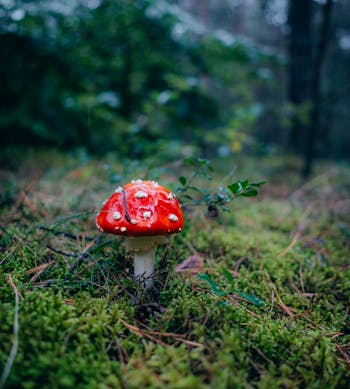Characteristics
Red fly agaric (Amanita muscaria (L.) Lam.) is a species of poisonous mushroom from the Amanitaceae family. The cap is distinctly red or with shades of yellow or orange, slightly ribbed edge, up to 20 cm in diameter, initially spherical or semi-spherical, later becomes open and flat. It is dry and shiny on the surface, the skin can be peeled off, it is covered with white, warty scales that are easy to remove and can be easily washed off during heavy rains, the edge is smooth, on older mushrooms it is wrinkled in the direction of the leaves. The leaflets are white, dense, wide and narrower towards the waist, free, narrowed at the ends. The stalk is white, cylindrical, slender, thickened in the lower part, initially full, later becomes hollow, grows up to 25 cm long. In the upper part of the spike there is a large, white, hanging corolla that often disappears. The flesh is white, yellowish to orange-red under the skin of the cap, without pronounced smell and taste, quite hard, fragile. Spores are elliptical, smooth, the otrusine is white.
Habitat fungi
It was naturally widespread in the northern hemisphere (Europe, Asia, North America), but elsewhere it was introduced by tree seedlings, and today it is widespread everywhere in the world. It grows in summer and autumn in deciduous and coniferous forests (spruce, larch, birch...) where there is more light, in lowland and mountainous areas.
Usage
It is a poisonous mushroom. The first symptoms of poisoning are impaired vision, hallucinations, abdominal pain, diarrhea and vomiting, which occurs a few hours after consumption.


.jpg)
.jpg)